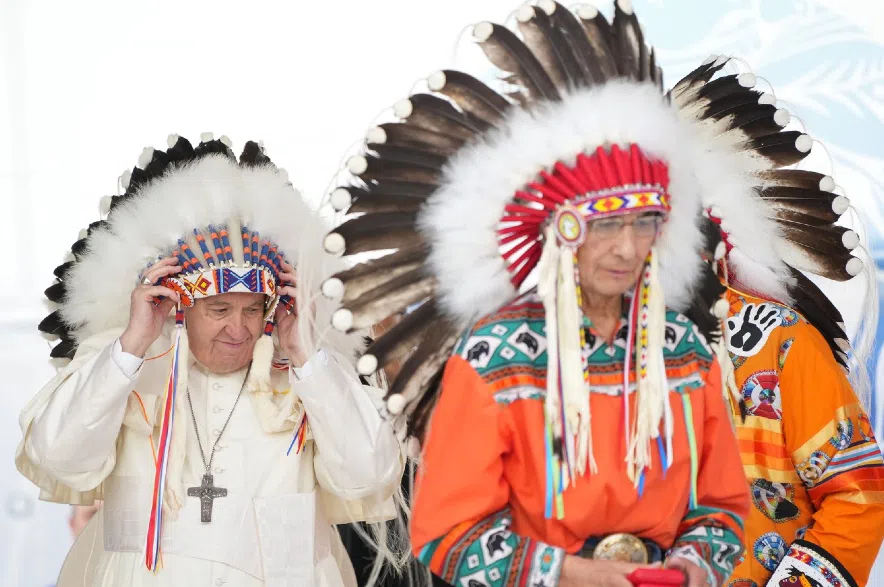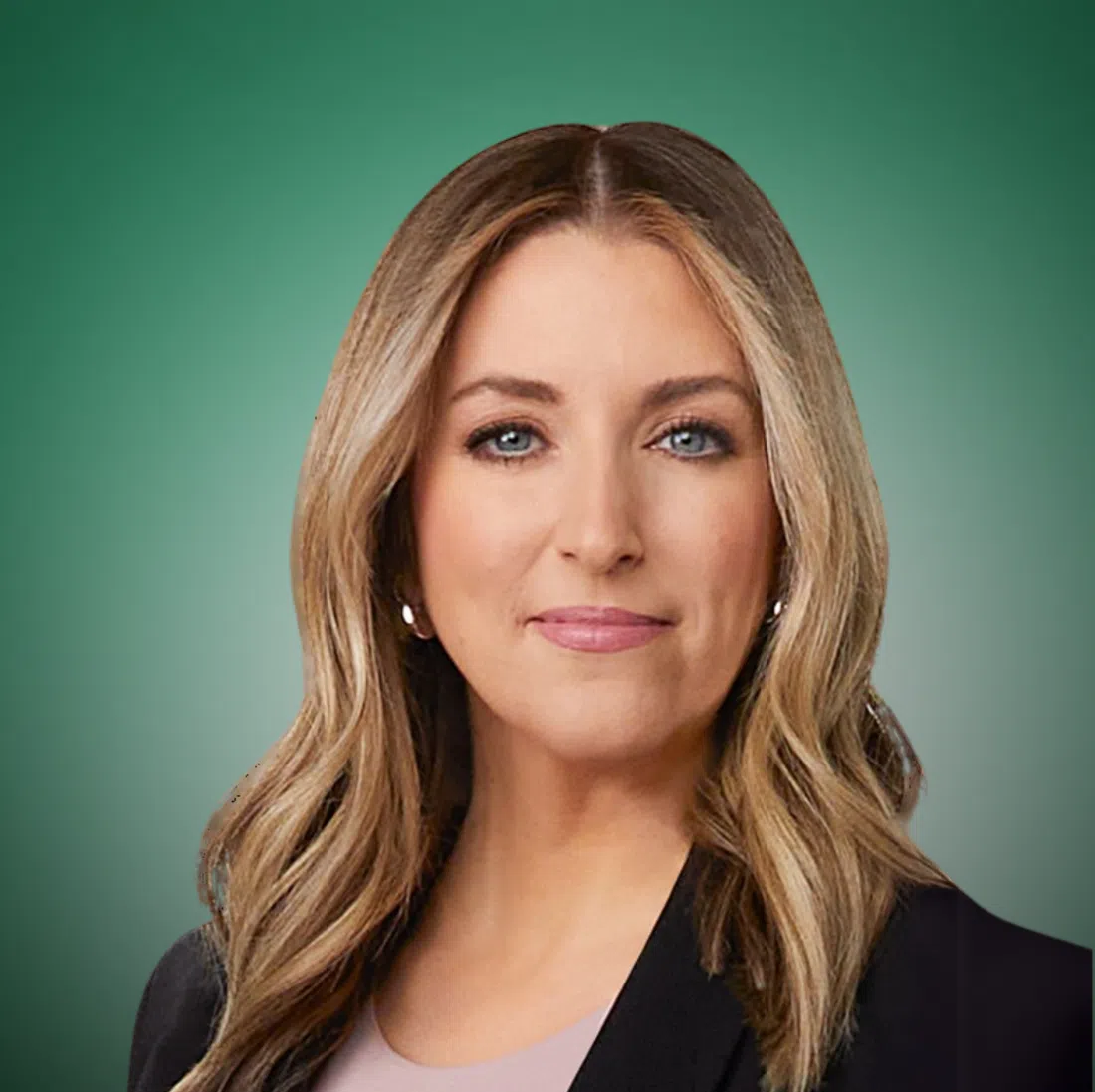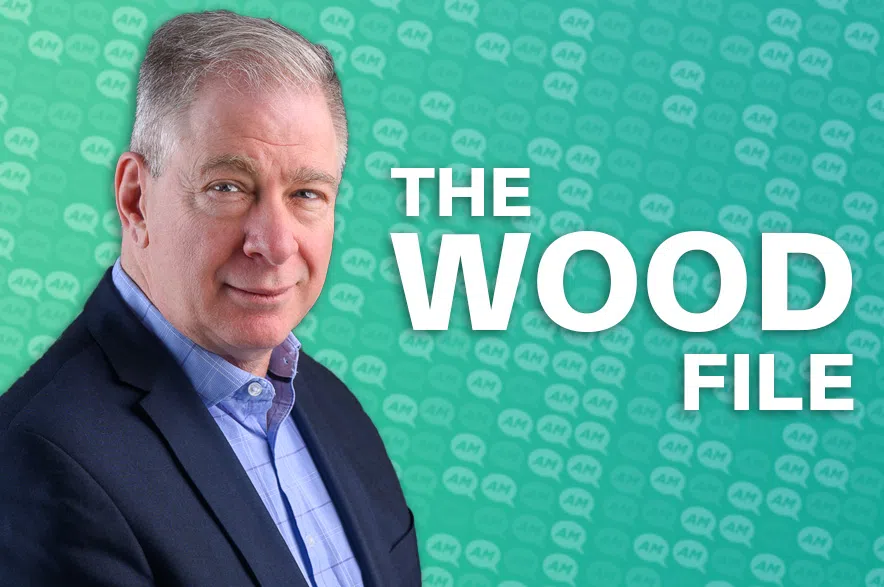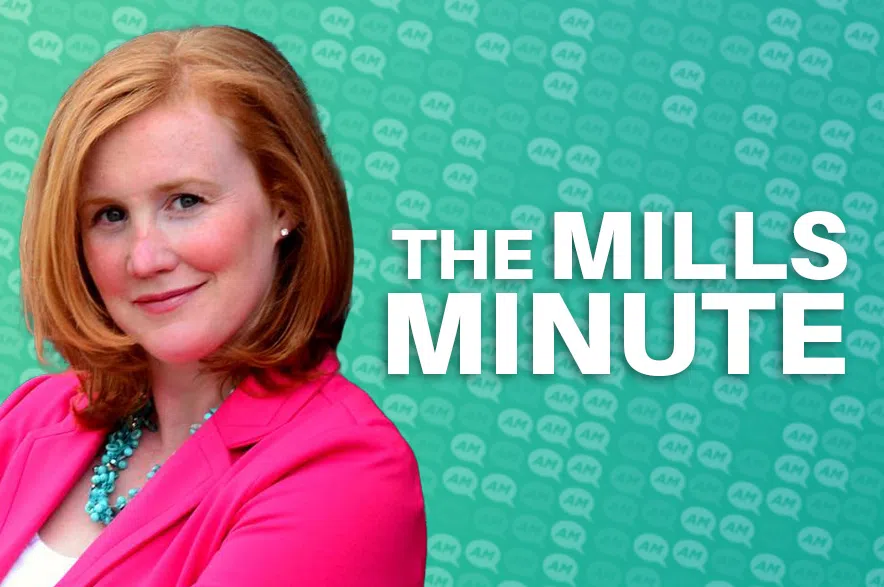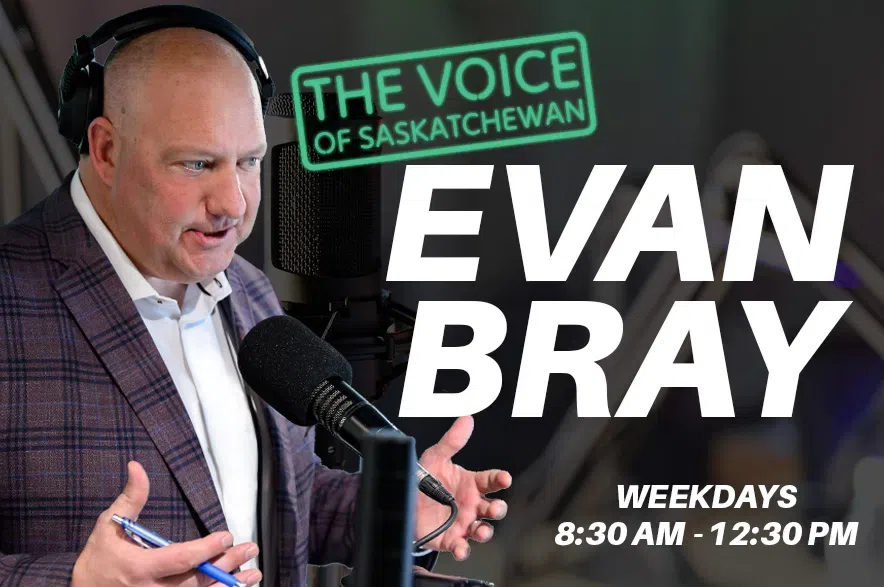OTTAWA — Indigenous groups in Canada say they want to see Pope Leo XIV continue the reconciliation work started by his predecessor, the late Pope Francis.
Francis was recognized as an ally of Canada’s Indigenous Peoples and was known for advancing reconciliation efforts and apologizing — both in the Vatican and in Canada — for the Catholic Church’s role in widespread abuses at residential schools.
Read more:
- ‘Need to signal change’: Prime Minister Mark Carney to unveil new cabinet Tuesday
- NDP talking to Carney government about getting official party status: Davies
- EXCLUSIVE: Premier Scott Moe on Western separatism
- Canadian researchers reach ‘major milestone’ in search for ALS treatment
His visit to Canada in 2022 was described as a “penitential pilgrimage” as Francis insisted on meeting with Indigenous survivors of residential schools and hearing their stories.
Pope Francis also expressed a willingness to return colonial-era artifacts in the Vatican Museum that were acquired from Indigenous people in Canada.
National Chief Cindy Woodhouse Nepinak, who was in Rome for Francis’s funeral, said the late pontiff did “a lot of good things.”
Woodhouse Nepinak said she welcomes Pope Leo and hopes he will be “open and receptive” to working together.
“I know that we have a lot of work to do but I think we can get there together,” she said. “I think the former pope had left lots of work undone and I think that we want to get back to that.”
Work on repatriating artifacts is “ongoing and we hope to have those discussions with the new Pope” and the Vatican, she said.
Inuit Tapiriit Kanatami, a national organization that represents over 65,000 Inuit in Canada, said on social media that it welcomes Leo’s selection.
“We look forward to continuing the productive work we have undertaken with the church on advancing reconciliation with Inuit,” the post says.
“And we hope that under his leadership, the Catholic Church will uphold and strengthen efforts to repatriate cultural heritage and support the priorities of Indigenous communities.”
The final report of the Truth and Reconciliation Commission of Canada, released in 2015, included a call to action urging the pontiff to travel to Canada to apologize.
Other calls to action included developing education strategies to ensure church congregations learn about their role in colonization, teaching the need to respect Indigenous spirituality and providing permanent funding for culture and language revitalization projects.
Woodhouse Nepinak said there must be an examination of Canada’s progress with the church on the calls to action, given that almost a decade has passed.
“We’re not doing as much as we should have and I think that we have to start measuring that,” she said.
Hope for another Canadian papal visit
Woodhouse Nepinak also said she hopes Pope Leo will come to Canada and meet with residential school survivors.
She added she is optimistic about his willingness to engage with Indigenous peoples, given his time in South America.
“Working in Peru, he would have been exposed to Indigenous culture, Indigenous ceremony, Indigenous ways of life,” she said. “I’m hoping that he would be open to seeing that here with First Nations in this country and meeting our residential school survivors to fully understand what they went through.”
About 150,000 Indigenous children were forced to attend residential schools in Canada. More than 60 per cent of the schools were run by the Catholic Church.
Neil MacCarthy, a spokesman for the Catholic archdiocese of Toronto, said he is “hopeful” that reconciliation work will continue, citing “huge strides” under Pope Francis.
“I think we have to acknowledge a lot was done,” said MacCarthy, who was involved with the Indigenous delegation to Rome in 2022 and the papal visit to Canada.
“It was, I think, a whole new chapter, most would agree, in the relationship with the Catholic Church and Indigenous Peoples.”
MacCarthy suggested that moving these issues along will take time.
“Part of that is working with the bishops in Canada and others who’ve been part of this journey and will continue to be moving forward,” MacCarthy said. “I think we all recognize that it’s a journey that needs to continue.”
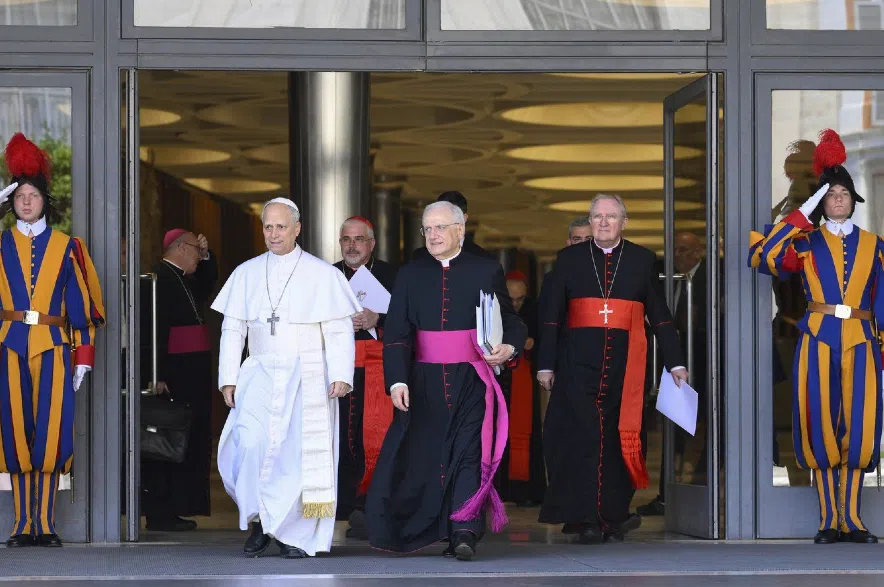
Pope Leo XIV, left, is flanked by Monsignor Leonardo Sapienza, second from left, after his meeting with the College of Cardinals in the New Synod Hall at the Vatican, Saturday, May 10, 2025. (Vatican Media via AP)
Pope Leo identifies AI as critical matter facing humanity
Pope Leo XIV laid out the vision of his papacy Saturday, identifying artificial intelligence as one of the most critical matters facing humanity and vowing to continue with some of the core priorities of Pope Francis.
But in a sign he was making the papacy very much his own, Leo made his first outing since his election, traveling to a sanctuary south of Rome that is dedicated to the Madonna and is of particular significance to his Augustinian order and his namesake, Pope Leo XIII.
Townspeople of Genazzano gathered in the square outside the main church housing the Madre del Buon Consiglio (Mother of Good Counsel) sanctuary as Leo arrived and greeted them.
The sanctuary, which is managed by Augustinian friars, has been a place of pilgrimage since the 15th century and the previous Pope Leo elevated it to a minor basilica and expanded the adjacent convent in the early 1900s.
After praying in the church, Leo greeted the townspeople and told them they had both a gift and a responsibility in having the Madonna in their midst. He offered a blessing and then got back into the passenger seat of the car, a black Volkswagen. En route back to the Vatican, he stopped to pray at Francis’ tomb at St. Mary Major Basilica.
The after-lunch outing came after Leo presided over his first formal audience, with the cardinals who elected him pope. In it Leo repeatedly cited Francis and the Argentine pope’s own 2013 mission statement, making clear a commitment to making the Catholic Church more inclusive and attentive to the faithful and a church that looks out for the “least and rejected.”
Leo told the cardinals that he was fully committed to the reforms of the Second Vatican Council, the 1960s meetings that modernized the church. He identified AI as one of the main issues facing humanity, saying it poses challenges to defending human dignity, justice and labor.
Some signs about the future emerge
The Vatican, meanwhile, provided hints of its own about the Leo pontificate: It revealed Saturday that Leo would retain the motto and coat of arms that he had as bishop of Chiclayo, Peru that emphasize unity in the church.
The motto, “In Illo uno unum,” was pronounced by St. Augustine in a sermon to explain that “although we Christians are many, in the one Christ we are one.” The emblem is that of the Augustinian order: a pierced flaming heart and a book, representing the Scriptures.
The Vatican also provided details about the pectoral cross that Leo is wearing: It was a gift from the Augustinian order when he was made a cardinal in 2023. It contains relics of St. Augustine and his mother, St. Monica, who was crucial in his conversion to Christianity.
St. Augustine of Hippo is one of the theological and devotional giants of early Christianity. The Augustinian order, formed in the 13th century as a community of “mendicant” friars, is dedicated to poverty, service and evangelization.
Identifying with Pope Francis
Leo referred to AI in explaining the choice of his name: His namesake, Pope Leo XIII, was pope from 1878 to 1903 and laid the foundation for modern Catholic social thought. He did so most famously with his 1891 encyclical Rerum Novarum, which addressed workers’ rights and capitalism at the dawn of the industrial age. The late pope criticized both laissez-faire capitalism and state-centric socialism, giving shape to a distinctly Catholic vein of economic teaching.
In his remarks Saturday, Leo said he identified with his predecessor.
“In our own day, the church offers everyone the treasury of its social teaching in response to another industrial revolution and to developments in the field of artificial intelligence that pose new challenges for the defense of human dignity, justice and labor,” he said.
Toward the end of his pontificate, Francis became increasingly vocal about the threats to humanity posed by AI and called for an international treaty to regulate it.
Francis in many ways saw the Chicago-born Augustinian missionary Robert Prevost as something of an heir apparent: He moved him to take over a small Peruvian diocese in 2014, where Prevost later became bishop and head of the Peruvian bishops conference, and then called him to Rome to take over one of the most important Vatican offices vetting bishop nominations in 2023.
In the speech, delivered in Italian in the Vatican’s synod hall — not the Apostolic Palace — Leo made repeated references to Francis and the mourning over his death. He held up Francis’ 2013 mission statement, “The Joy of the Gospel,” as something of his own marching orders.
He cited Francis’ insistence on the missionary nature of the church and the need to make its leadership more collegial. He cited the need to pay attention to what the faithful say “especially in its most authentic and inclusive forms, especially popular piety.”
Again, referring to Francis’ 2013 mission statement, Leo cited the need for the church to express “loving care for the least and rejected” and engage in courageous dialogue with the contemporary world.
A quick conclave
Greeted by a standing ovation, Leo read from his prepared text, only looking up occasionally. Even when he first appeared to the world on Thursday night, Leo read from a prepared, handwritten text in Italian that he must have drafted sometime before his historic election or the hour or so after. He seemed most comfortable speaking off-the-cuff in the few words he pronounced in Spanish.
Prevost was elected the 267th pontiff on Thursday on the fourth ballot of the conclave, an exceptionally fast outcome given this was the largest and most geographically diverse conclave in history and not all cardinals knew one another before arriving in Rome.
Madagascar Cardinal Désiré Tsarahazana told reporters on Saturday that on the final ballot, Prevost had received “more” than 100 of the 133 votes. That suggests an extraordinary margin, well beyond the two-thirds, or 89 votes, necessary to be elected.
A comment from a contender
Cardinal Pietro Parolin, the Vatican secretary of state who had been considered one of the top contenders to be pope, offered his congratulations on Saturday in a letter published in his hometown paper, Il Giornale di Vicenza.
Parolin praised Leo’s grasp of today’s problems, recalling his first words from the loggia when he spoke of the need for a peace that is “disarmed and disarming.” Parolin said he had appreciated Prevost’s leadership in Chiclayo, saying he helped handle a particularly thorny problem — with no details — and grew to appreciate his governance more closely at the Vatican handling the bishops’ office.
Specifically, Parolin praised Leo’s understanding of people and situations, his “calmness in argumentation, balance in proposing solutions, respect, care and love for everyone.”
— by Catherine Morrison, with files from Kelly Geraldine Malone, Brittany Hobson, Nicole Thompson, Cassandra Szklarski, Fakiha Baig, Nicole Winfield and The Associated Press
Read more:
